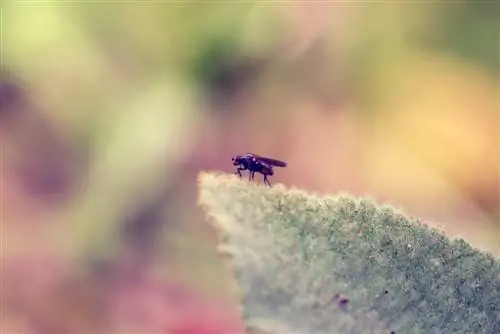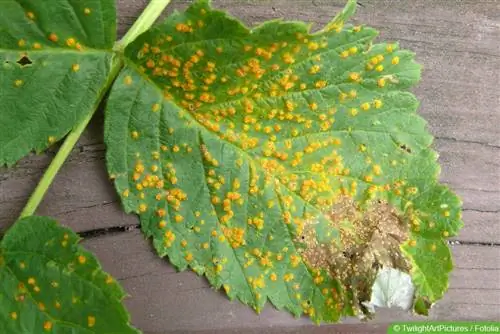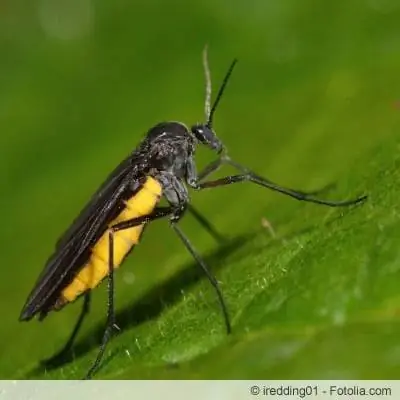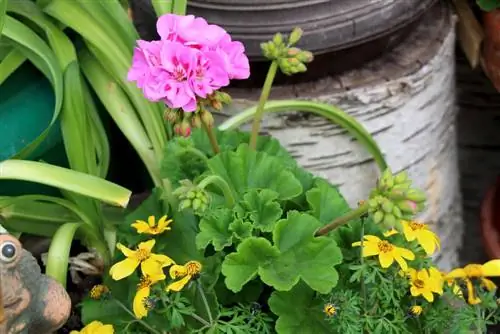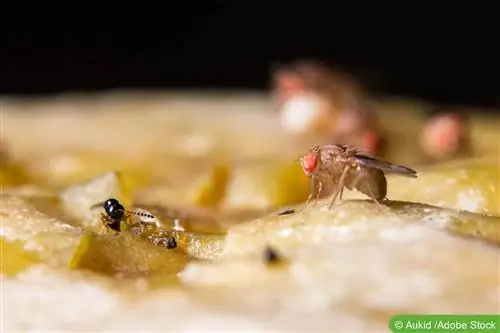- Author admin [email protected].
- Public 2023-12-17 03:39.
- Last modified 2025-06-01 06:48.
When the fly swatter can no longer control the situation, many people pull out the chemical club. However, such products are not only expensive and harmful to the he alth of people and pets, they can also cause resistance in some insects and therefore become ineffective.
Combating and preventing flies and fruit flies biologically has several advantages. Biological fly control is cost-effective, harmless to he alth and also gentler on the environment. With the right means and measures, but effectively.
Prevention
As is often the case in life, the same applies to flies and fruit flies: prevention is better than cure. Better than fighting the annoying insects, it is better not to let them into the house in the first place. To do this, it is first important to know their preferred food sources.
They are attracted to:
- Food and drink leftovers
- Fruits and vegetables
- Garbage
- Compost
- used litter boxes and other animal waste
Animal food
In order to avoid attracting insects in the first place, you should pay attention to a few factors, especially in the warm seasons.
- note appropriate storage of food
- It's better to keep fruit and vegetables in the fridge
- Food, drinks and leftover food should not be left outside
- Dishes are best washed immediately after use and contaminated surfaces are wiped down
- Wash out beverage bottles or seal them tightly
- do not leave pet food out
- Clean pet toilets and cages frequently
- Trash immediately outside the apartment
- Wash out the trash can
- Seal garbage bags tightly
- If at all possible, do not place garbage cans close to the house
Nevertheless, it may be necessary to combat flies and fruit flies biologically. Although the measures mentioned reduce the risk of an infestation, the pests can still be found in the apartment. Fruit flies are usually recorded together with fruits and vegetables, house flies can definitely 'fly away'. Even then, they can be stopped.
Free Air
Flies and fruit flies like warmth and stale air that smells like food and, in their case, like garbage or feces. Another important preventative measure is frequent and regular ventilation. However, open windows are also an invitation to winged insects. There are a few points to pay attention to when opening the windows.
So you should only ventilate extensively when it is cool outside and the windows are in the shade. Not only does this prevent mold from forming, flies are also less active at this time. Of course, this is not always possible, especially in summer. In addition, windows and balcony doors must be fitted with fly screens or curtains. In addition to flies, these also keep mosquitoes and moths away. Special versions even filter pollen from the air, making them ideal for allergy sufferers.
Tip:
Check the nets regularly for damage and holes and replace them if necessary, only then can they do their job.
Fragrances

As much as flies and fruit flies prefer some scents, they are put off by others. If you know these, you can fight flies and fruit flies biologically and do something good for your own nose at the same time. Deterring insects:
- Mint
- Lavender
- Laurel
- Tomatoes
- Basil
- Geraniums
- Cloves
Fresh, dried or applied as oil, the aromas mentioned are ideal for making the balcony, window and apartment less attractive to the pests.
Tip:
This measure can be carried out particularly quickly and with little effort if the substances are added to cloths as essential oils and placed on the windowsill.
Falling
If all else fails and flies and fruit flies continue to be found in the house despite the greatest caution and thoroughness, traps are the method of choice. Basically, a distinction can be made between adhesive traps and liquid traps.
Glue traps
Glue traps, such as rolled-up fly paper, are inexpensive and quick to install. The roll is hung up and then easily pulled out of the packaging. The sticky coating ensures that the flies cannot get away and die comparatively quickly in the trap. When the fly paper is full, it is thrown away. However, such traps do not only have advantages. So everything sticks to them - including hair, pets and beneficial insects. So they have to be out of reach, which is often not easy with cats or birds flying freely in the room, for example. On the other hand, they are not very attractive and give the flies an unpleasant end.
Liquid Traps
The liquid traps are suitable for biological control of flies and fruit flies. Depending on the exact type, they are more effective for some than for others. A quick variant is to mix vinegar, fruit juice or syrup with a little water and one to three drops of dishwashing detergent and leave it open. The smell attracts flies, and the lack of surface tension caused by the detergent leads to drowning in the liquid. This can quickly eliminate fruit flies in particular.
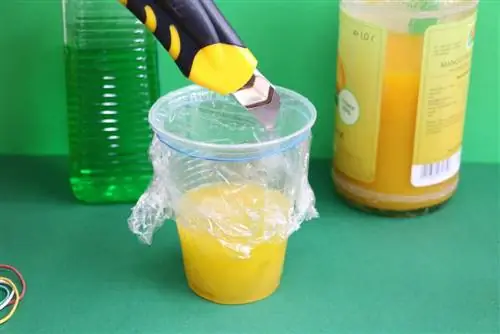
Slightly more effective against house flies is a mixture of plenty of sweetener, but not stevia, and sugar water or fruit juice. The flies do not drown in it, but are poisoned by the liquid. Unfortunately, they still get a little farther and usually don't end up directly in the trap, which in turn requires cleaning. The classic fly agaric trap, from which the fly agaric got its name, works in a similar way. To do this, a mushroom is chopped into small pieces and poured over with warm milk. After about a day, the milk is mixed with the mushroom's poison and quickly kills the flies. However, there is a risk that pets could also become poisoned.
Frequently asked questions
Can I make fly paper myself?
Yes. With blotting paper, syrup and pepper. The paper is coated with a mixture of pepper and syrup and then works like standard fly paper. However, the associated effort and difficulty of attachment are hardly worth it due to the low prices for ready-made fly paper.
Do fly problems only arise if it is not clean?
No. There are more flies, especially in rural areas, because they have better chances due to animal husbandry. If the pests are found outside in large numbers, they end up indoors more often. However, thorough cleaning and the elimination of possible food sources helps to avoid attracting them additionally.
What you should know about fly traps in brief
As soon as the temperatures rise, the chance that you will inevitably encounter flies in your house and garden also increases. They are almost always a nuisance when food is involved. The only way to control flies is a combination of fly repellent and fly trap - depending on where you want to use it.
- If you want to avoid flies in the house, you should first use a fly screen to repellent.
- A curtain made of bamboo, for example, is suitable for doors. This does not have to be tight. It is enough if the door has a large area of hanging.
If flies do get into your apartment, you can fight them with various fly traps:
- The most famous fly trap consists of a combination of glue and a sweet mass that attracts flies with its smell. These fly traps are available from around 2 euros each for 4 pieces and are particularly effective on fruit flies.
- There are suns and stars in stores that you can stick on your window. These motifs are coated on the surface with a substance that is deadly to flies, so that the flies die within a short time after touching the fly trap.
Note
Whether this is fully recommended, especially if there are children in the house, is questionable! - A home remedy that is particularly suitable for barbecues is fly paper. This fly trap can be made as follows: Take ground pepper and syrup; Mix this into a paste and soak a blotter in it. You place this on the ground a few meters away from the terrace and you can soon see how the flies are attracted to the biological fly trap.

